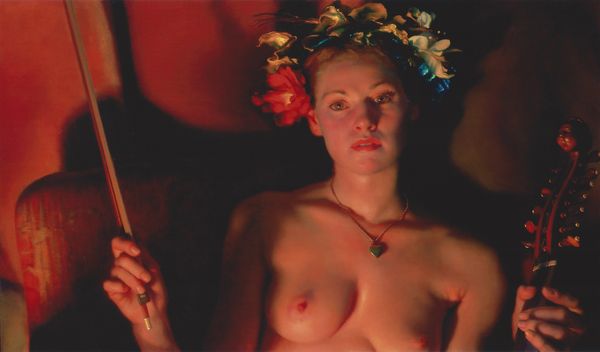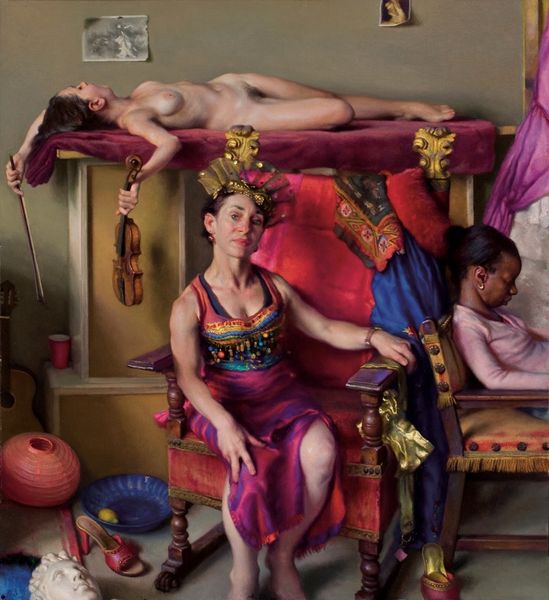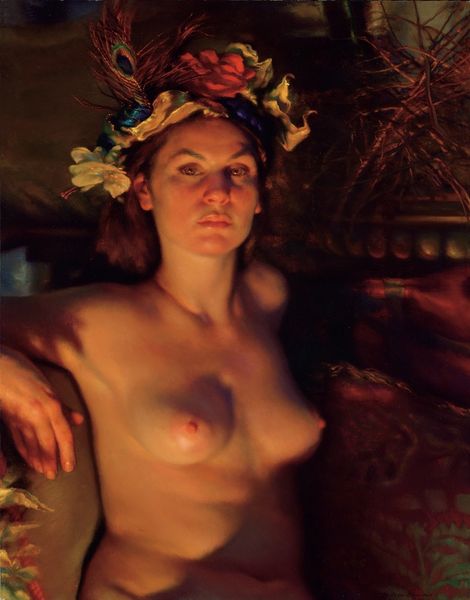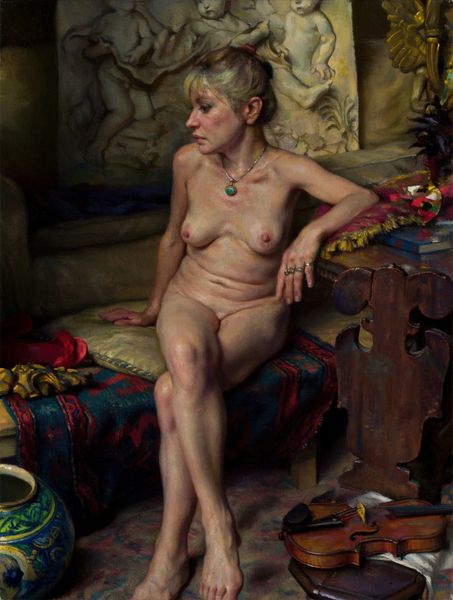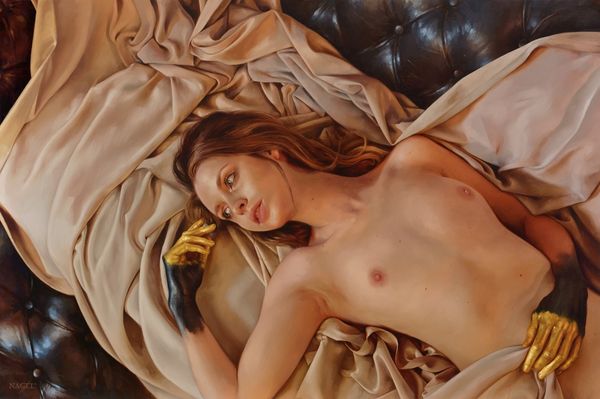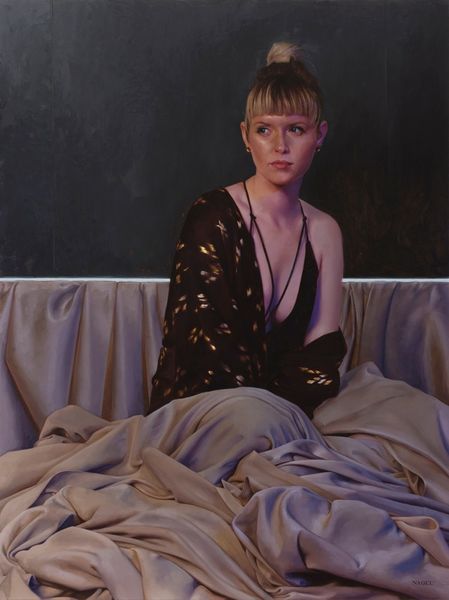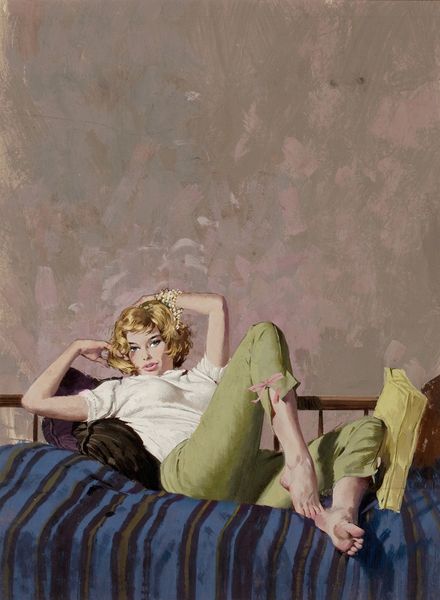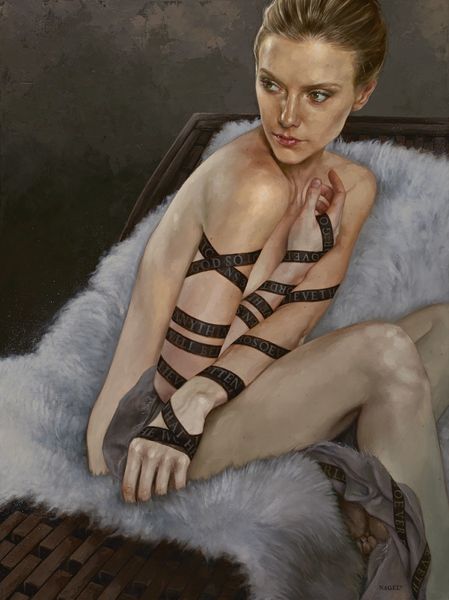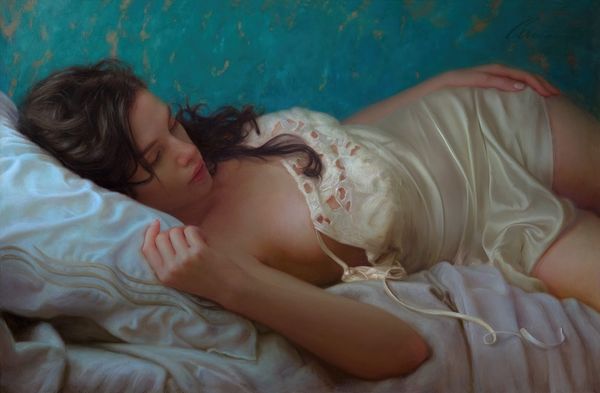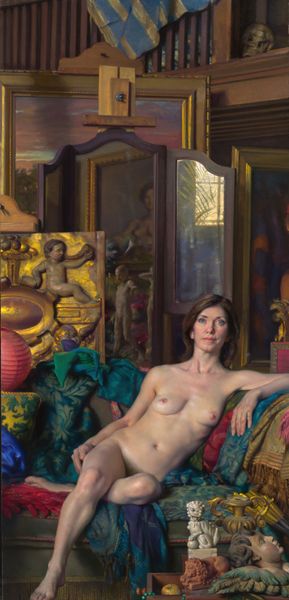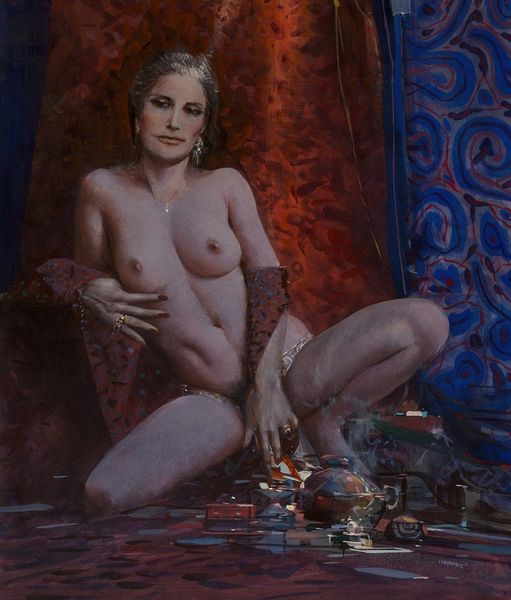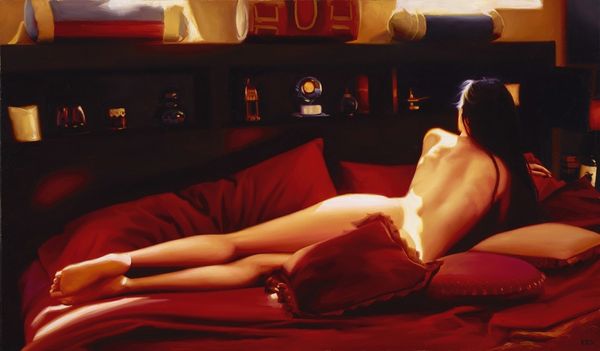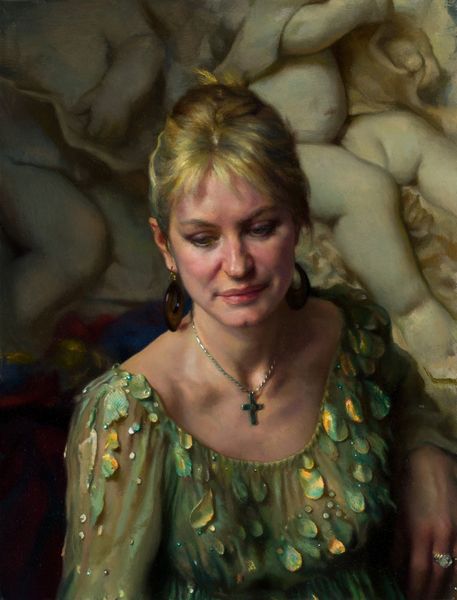
#
figurative
#
candid
#
festivity
#
cosplay
#
festival photography
#
festivity and dance
#
fashion editorial
#
performing
#
culture event photography
#
cultural celebration
#
stage performance
Copyright: Modern Artists: Artvee
Editor: Nelson Shanks' "Salomé," created in 2007, presents the biblical figure in a surprisingly modern, almost bohemian setting. There’s a tension between the historical reference and the contemporary feel, heightened by her gaze directly at the viewer. How would you interpret the artist's choices in constructing this image? Curator: The compositional strategy immediately arrests one's gaze. Notice how Shanks uses contrasting textures—the smoothness of her skin against the ornate details of her clothing and surroundings. This contrast not only directs our focus, but also creates a push and pull between realism and artifice. Also note the interplay of light; the subtle gradations suggest an engagement with classic modes of painting, but deployed to disrupt, rather than to soothe. How might you view that tension? Editor: It almost feels like a stage set, with her at the center, both vulnerable and powerful. The props—the mask, the beaded curtain—suggest a narrative, but it’s not a literal retelling of the Salome story. It is more about the performance of identity? Curator: Precisely. And consider how the artist plays with color; the deep reds and blues offset by the golden hues of her adornments. Do these color choices reinforce or challenge traditional interpretations of Salomé? Are we meant to see her as seductive and dangerous or something else entirely? Editor: It's definitely challenging my initial perception. I initially saw it as a straightforward portrait with some theatrical elements, but the complexities in composition and light seem to suggest something more abstract and conceptual. Curator: Indeed. What appeared as a straightforward depiction unravels upon closer examination. That layering and intentional disruption forces the viewer to actively participate in meaning-making. Editor: This close analysis has revealed layers of intention I completely missed! It's less a portrayal of Salome, but more of an exercise in the potential for narrative within painting itself. Curator: I am so glad to hear you say that. Perhaps Shanks provides a starting point for considering how meaning is built through formal means.
Comments
No comments
Be the first to comment and join the conversation on the ultimate creative platform.
